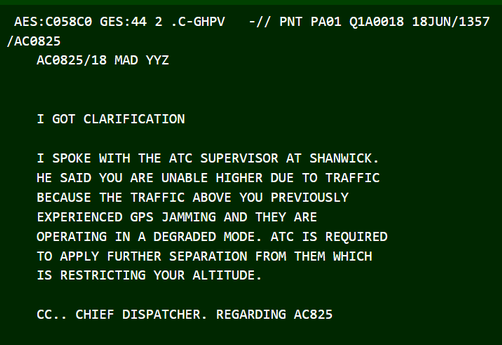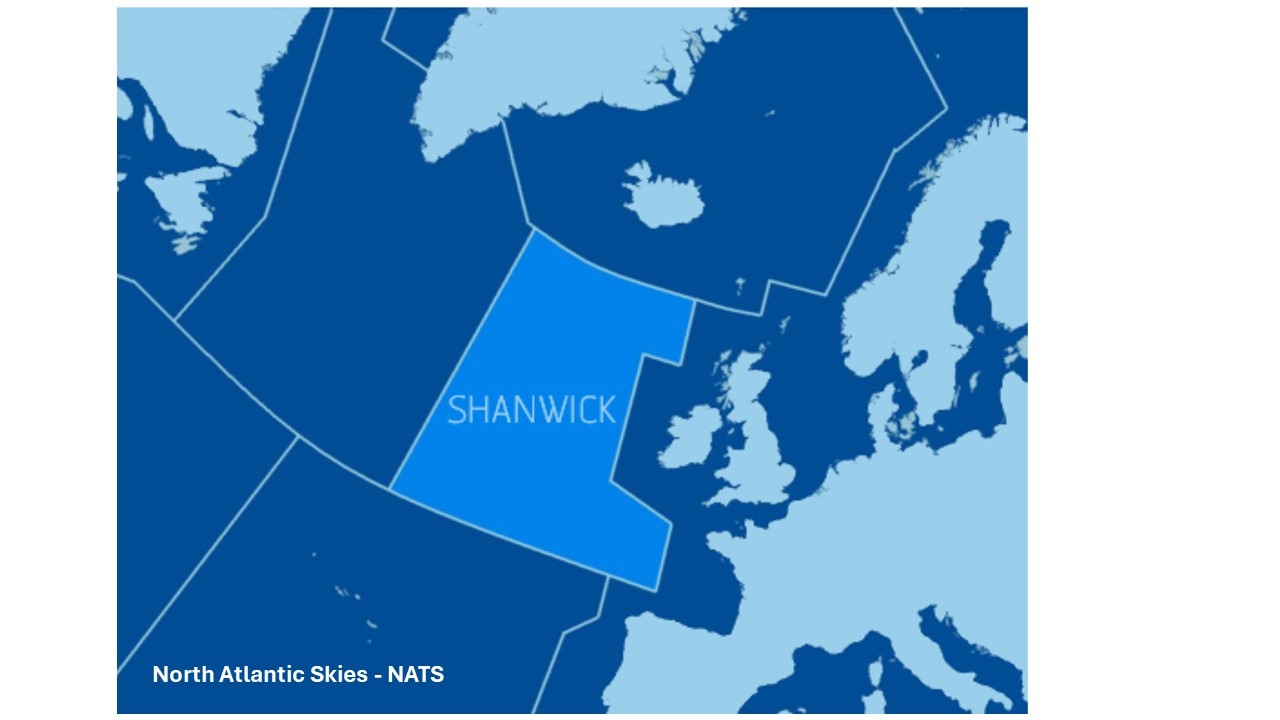Image: North Atlantic Skies – NATS
 What’s New: A report of transatlantic air traffic being impacted by GPS interference. A pilot relayed he or she was not able to proceed as they wished because another aircraft at a flight level above them had experienced GPS jamming.
What’s New: A report of transatlantic air traffic being impacted by GPS interference. A pilot relayed he or she was not able to proceed as they wished because another aircraft at a flight level above them had experienced GPS jamming.
Why it’s Important: Two to three thousand flights cross the Atlantic each day. If this happens regularly, thousands of flights a day could be impacted with delays and cancellations.

What Else to Know (about air traffic):
- There is no air traffic radar coverage over the Atlantic (or any large ocean).
- GPS-based ADS-B transponders on airliners allow pilots and air traffic controllers to keep track of aircraft and ensure they are sufficiently separated from each other to avoid collisions.
- If GPS is not available or not working on one of the aircraft making the crossing, the separation between aircraft has to be increased. This means fewer aircraft on the route than planned and delays to schedules.
- Two to three thousand flights a day cross the Atlantic.
What Else to Know (about what probably happened in this case):
- Sometimes when a GPS receiver is jammed it is not able to recover on its own, even when it out of range of the interference.
- One way of addressing the problem is to shut of power to the receiver entirely by pulling the circuit breaker and then resetting it. – We are told, though, that while this used to be a common practice “back in the day,” most flight manuals and airlines do not allow pilots to pull circuit breakers any more.
- It is likely the aircraft that experienced GPS jamming was coming from the Baltic or or middle east where interference is common, and one or both of its GPS receivers had not recovered. – See the comment in the report about operating in “degraded mode.”
If this happens in the same area more often it will have a major impact on air traffic. 80% of transatlantic air traffic goes through the Shanwick OCA.

Related topic: London Economics’ recent report on the importance of GPS backup systems.


